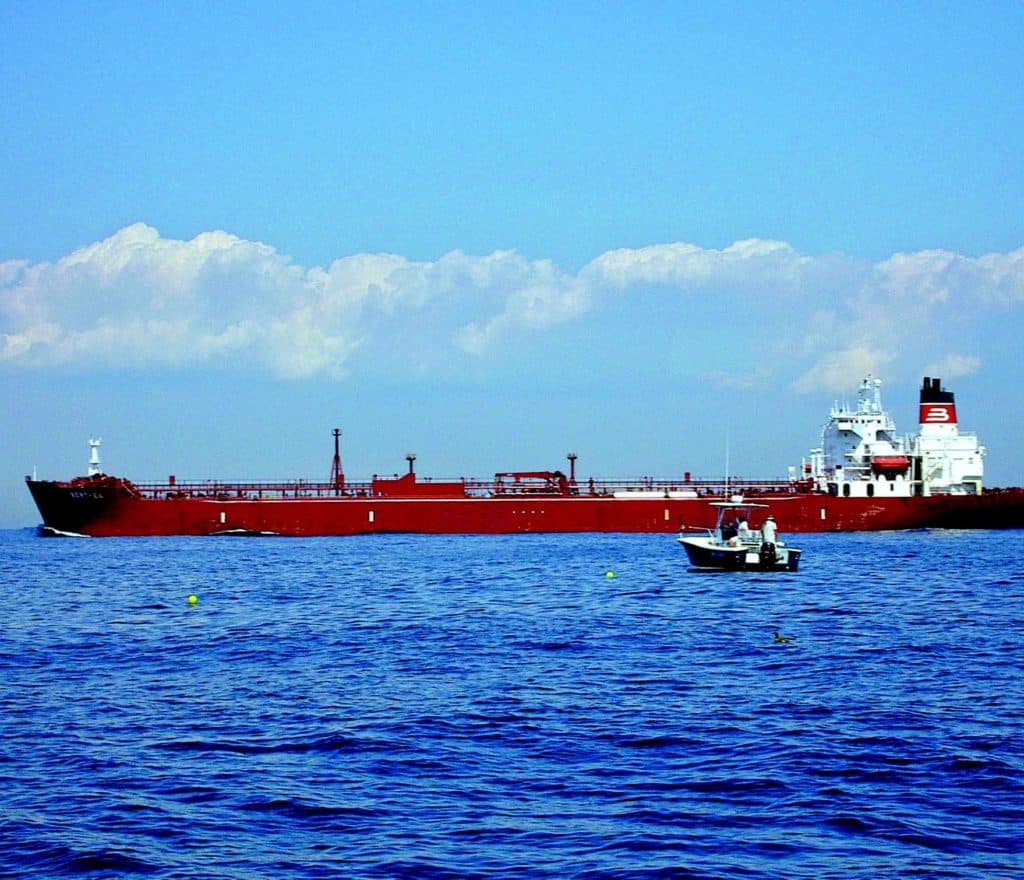
On a Crystal-clear summer day, Capt. William McGovern — a full branch pilot with the Sandy Hook Pilots Association — stood at the helm of a 1,000-foot tanker guiding the ship into new York Harbor. A 28-foot cruiser that had vacated the channel suddenly cut back in front of his ship and disappeared out of sight. McGovern ran out to the bridge wing and saw the little boat below, pinned against the side of the ship by its suction. A woman at the bow looked up at him and held up the reason why her husband cut in front of the ship: to retrieve their nine-dollar bait bucket.
“A beautiful summer day should be relaxing,” McGovern said, “but your heart is beating out of your shirt because you don’t want to kill anyone.”
McGovern, who became a harbor pilot in 1990, said it’s a huge problem when boaters without basic knowledge of commercial shipping play in traffic. Here are five tips he preaches to boaters to keep them safe.
Clear the Channel
If you see a ship approaching a channel from a few miles out, clear the area and stay away until it has passed through. Moving to the side is not enough. If a ship loses its steering or breaks a rudder, it can
take a shear — unexpectedly turn to one side. “If you’re in shallow water outside the channel,” McGovern said, “I’m probably going to go aground before I hit you.”
Don’t Drop Anchor
In an active channel? Say the anchor gets stuck or you can’t restart the engines; a large commercial vessel is not going to be able to stop in time or take evasive action. Any accident will be your fault. Said McGovern, “You are not allowed to impede a vessel transiting a narrow channel or fairway that’s constrained by its draft or ability to maneuver.”
You’re Not Seen
McGovern said that, from the helm of big tankers, he could lose sight of you from 1,500 feet out. To put that in perspective, you could be invisible from five football fields away. If he doesn’t know where you are, “all I can do is keep going straight.”
Don’t Cut in Front
If you cut too closely in front of a ship and the engine quits or you get stuck, there’s no way it can stop in time to avoid you. If you have to cross a commercial vessel’s path, cross on the stern.
Communicate
AIS is a great tool for understanding local commercial traffic. Barring that, monitor Channel 13 to hear wheelhouse-to-wheelhouse communication. If you’ve broken down in the shipping lane and don’t have a VHF or AIS, wave something orange, like a life jacket. “If I know you’re in trouble, I’ll call the Coast Guard for you,” McGovern said.
You can ignore McGovern’s advice, but remember that a 1,000-foot container ship could run over a 50-footer and not feel a thing.
The U.S. Coast Guard is asking all boat owners and operators to help reduce fatalities, injuries, property damage, and associated healthcare costs related to recreational boating accidents by taking personal responsibility for their own safety and the safety of their passengers. Essential steps include: wearing a life jacket at all times and requiring passengers to do the same; never boating under the influence (BUI); successfully completing a boating safety course; and getting a Vessel Safety Check (VSC) annually from local U.S. Coast Guard Auxiliary, United States Power Squadrons(r), or your state boating agency’s Vessel Examiners. The U.S. Coast Guard reminds all boaters to “Boat Responsibly!” For more tips on boating safety, visit www.uscgboating.org.








